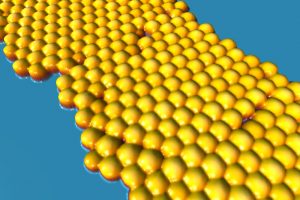Developed for Atomic Force Microscopy
Atomic Force Microscopy, AFM was invented by IBM Scientists in 1986 and is the most common microscopy technique within the family of Scanning Probe Microscopes, SPM, which offers topographic imaging capabilities at the atomic nano level. Such images require dedicated image processing software and new calibration and image enhancement techniques. In addition, the AFM technique offers the possibility to perform mechanical experiments, so e.g. adhesion and elasticity of the surface or biological objects, such as DNA molecules and proteins, can be measured and analyzed by use of dedicated Force Curve Analysis algorithms. Today, SPIP™ is recognized as one of the best tools for AFM.
The SPIP™ Workflow
The SPIP™ software is continuously develolped by experts in order to provide microscopy users with state-of-the-art image processing software. As a result, SPIP™ is designed to steamline the user's workflow from beginning to end, starting with correction tools for creating the most accurate representation of the "true" surface, then interactive and automated analysis techniques ensruing high work efficiency and finally visualization and reporting tools enabling users to present convincing and impressive results.
Correction & Noise Reduction

SPIP™ has a large palette of functions for removing noise, form or background structure from images and curves ranging from removing simple tilt in images to drag correction of force curves.
Noise reduction includes averaging techniques such as averaging of cross section profiles or advance correlation averaging of repeated structures in images.
Additionally, SPIP™ has unique methods for nanoscale calibration. These methods have served as inspiration for the ISO 11952:2014 written standard and are used by leading national metrology institutes.
Analysis & Inspection

SPIP™ offers an extensive palette of image analysis functions, such as Particle & Pore Analysis, Roughness Analysis and Fourier Analysis. Additionally, there are analytical functions available for orther SPM related data types, such as force curve and force volume analysis , including e.g. Young's modulus mapping.
The wide range of interactive tools include cross section profiling, shape measures, 3D visualization and zoom.
Flexible area of interest markers serve not only for inspecting and quantifying images and curves in detail, but also as valuable assistance during the process of correcting and reducing noise in data.
Visualization & Reporting

In order for data to be used in presentations, reports and scientific publications, all data views in SPIP™ have comprehensive visualization settings and export otions available. In particular, the 3D Visualization feature generates stunning projections which can be brought to live in 3D animation movies. Additionally, movie making in SPIP™ includes time series animations.
The reporting feature allows users to report their data to Word using fully controllable templates. In combination with the Batch Processing scripting feature, image bundles, force curves or other data can be processed and reported automatically.



